Last Updated
Sargassum levels in the Riviera Maya are expected to nearly double compared to levels seen last year. Despite earlier warnings at the start of the year suggesting that 2023 could bring some much-needed and welcome respite from the invasive stinky seaweed, more recent findings from scientific bodies in the region have released the news that all travelers to the Mexican Caribbean and beyond didn’t want to hear, particularly after last year’s sargassum influx ruined the vacations of millions of travelers.
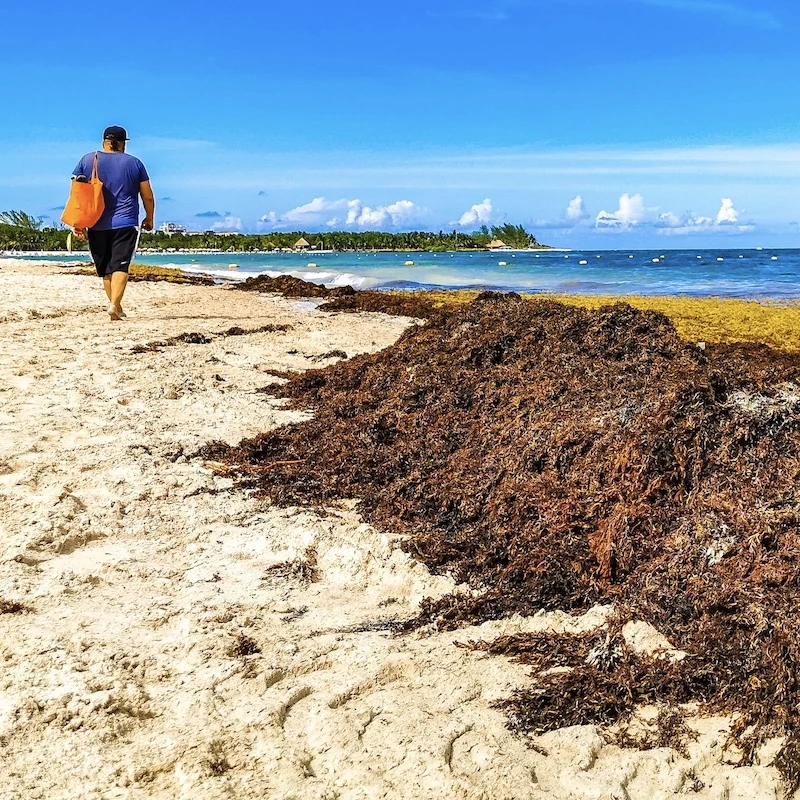
Despite being a mostly harmless, naturally-occurring phenomenon, beaches full of sargassum, with its strong stench of rotting eggs, isn’t exactly what travelers have in mind when they book a vacation in the Riviera Maya.
Fiendishly hard to predict and notoriously tough to keep away and keep on top of, here’s a look at what the latest findings say about sargassum coming to the region this year, plus a look at how hotels and cities alike are planning to tackle the stinky seaweed ones it gets here.
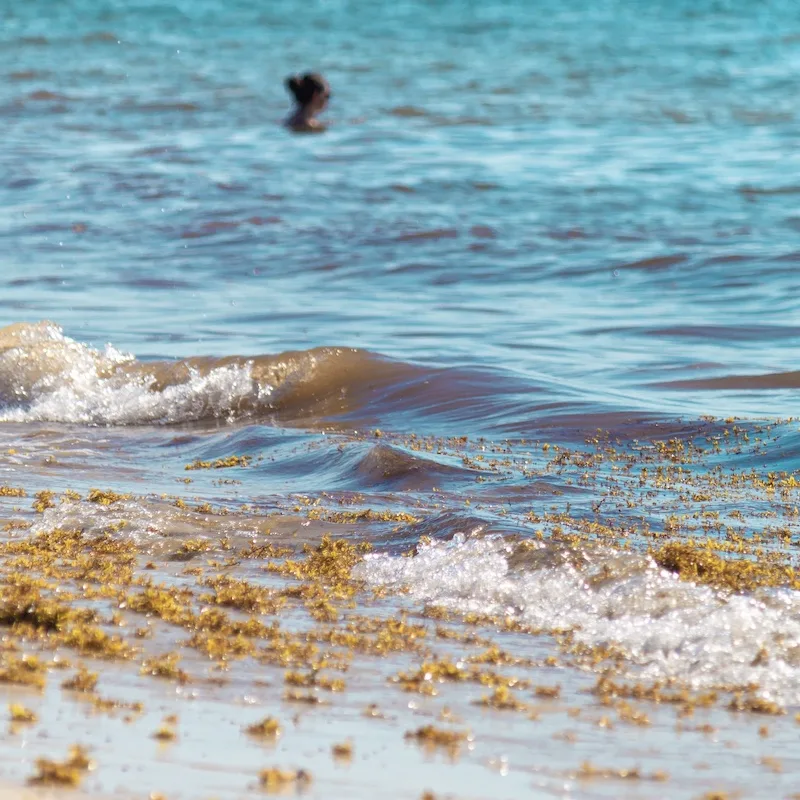
Sargassum To Double – Information For Travelers
If you’ve been to the Riviera Maya before, there’s more than likely a high chance that you’ve encountered sargassum before. Despite being home to some of the best, white-sanded beaches on the planet, the region’s geographical location makes it a hot spot for the microalgae to wash up on.
With its unsightly, slimy brown appearance and unmistakable rotten egg smell as it rots away, sargassum has been an unwelcome plague on the beaches of Cancun, Tulum, and several other of Quintana Roo’s top destinations, and this year it’s set to return with a vengeance.
Top 5 Travel Insurance Plans For 2023 Starting At $10 Per Week
Easily Earn Points For Free Travel
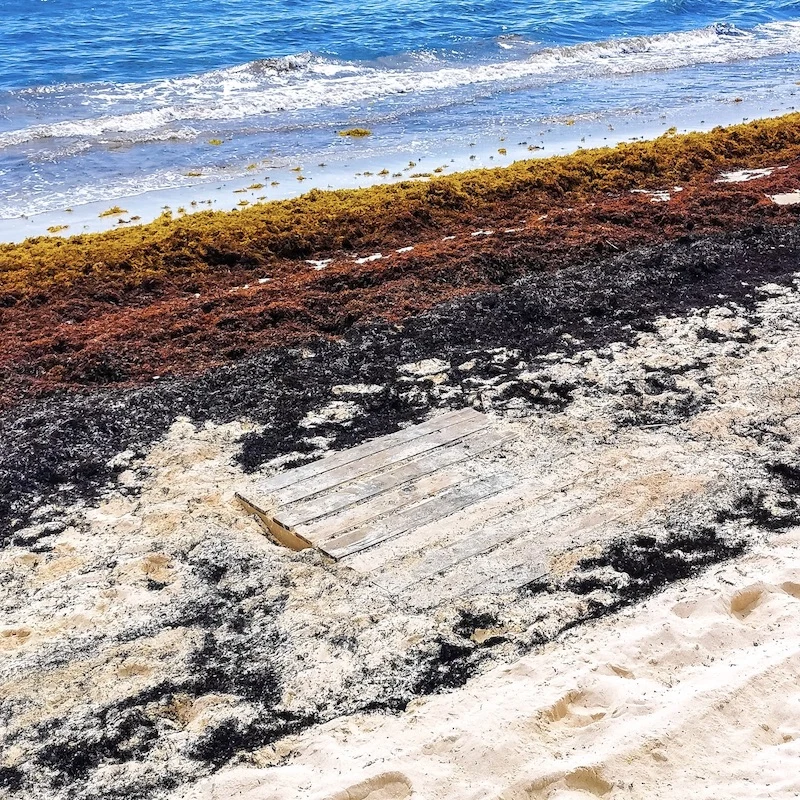
By all metrics, last year was a particularly bad year for stinky seaweed in the Mexican Riviera. According to official statistics, some 54,000 tons were collected from beaches along the coast in a herculean effort by private companies and hotels alike as they battled against the sargassum tide to ensure the majority of the record-breaking number of travelers left the region with the desire to come back. This year, however, the situation is set to be taken up several notches with a mammoth landfall of the seaweed.
@nadiallubere1 #sinsargazo #triste #fyp #viral #tiktok #cancun ♬ sonido original – Nadia Llubere
The Sargasso Monitoring Network, a team that analyzes sargassum throughout the region, predicts that there could be almost 90,000 tons of the stinky seaweed washing up on beaches throughout the Riviera Maya.
Not only is that a significant volume more than was seen last year, it’s more than double the 44,000 tons of sargassum that was found on beaches in 2021. Not only that, but the season has started early – making significant landfall already this month, rather than the typical arrival time of May.
@jbaymedia #mexico #sargassum update Feb 7, 2023. #vacation in #playadelcarmen or #cancun is still great but have expectations for this #seaweed that is normally like this in #summertime , not Jan-March… 🏝️ ☀️ ✈️ @jbaymedia #travel #vaca #traveltiktok #contentcreator #youtuber ♬ Epic Music(863502) – Draganov89
If travelers are looking for a ray of hope, there is always the chance that the Sargasso Monitoring Network are wrong in its predictions. After all, just a few weeks ago, it was thought that this year would see particularly low levels of the microalgae washing up on beaches.
Sargassum’s arrival is entirely dependent on nature, particularly on the ocean currents, but a range of factors, such as storms and other inclement weather, could alter its course. If this isn’t enough hope, travelers can rest assured that the authorities are doing all they can to tackle the problem.
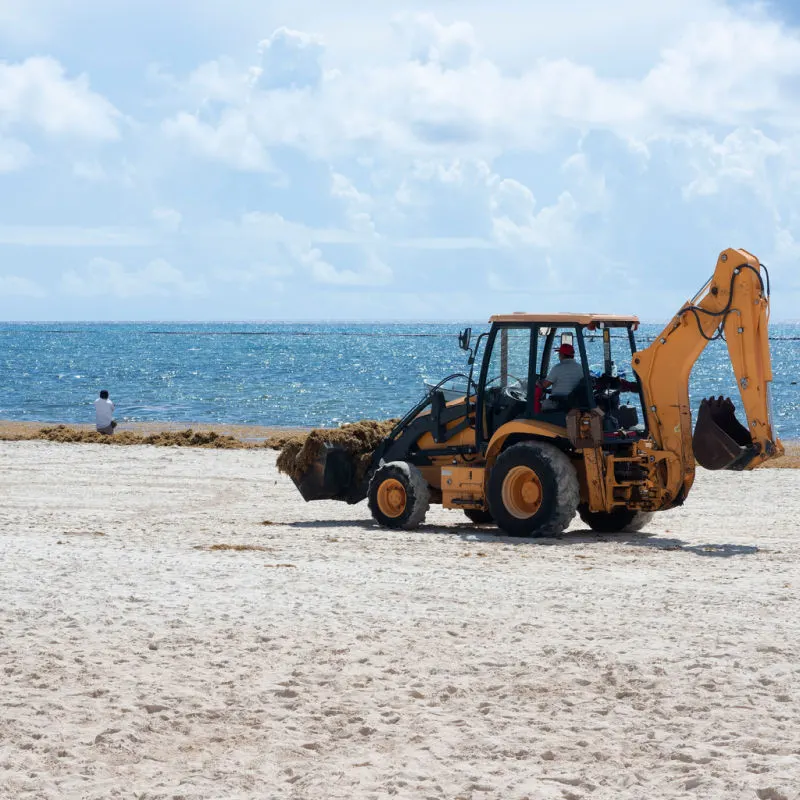
The governor of Quintana Roo, Mara Lezama, stated that 1,400 meters of ocean barriers were to be constructed in the hope of preventing the seaweed from ever reaching the beach.
On top of this, and the other methods hotels and local governments are taking to mitigate the situation, there is also a large plant that has been developed to treat the sargassum, which should make dealing with the problem much easier for the authorities.
While there’s no way to totally prevent the stinky seaweed from making an appearance, at least the government is proactive in its attempts to lessen its impact.
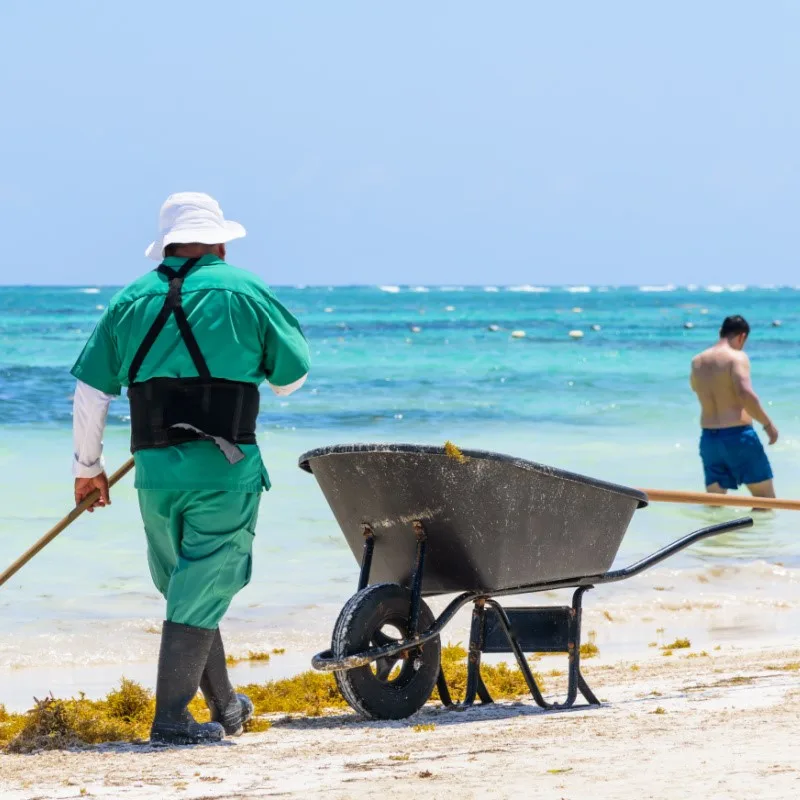
And if it does arrive en mass, travelers should also be reminded that it is pretty much harmless. While it may ruin the aesthetic of your beach shots and travel vlogs, the sea is still as blue and inviting as ever, and there are bound to be stretches of the beach unaffected enough to still enjoy your stay.
Besides, if the smell does get too much, Cancun and the surrounding areas have more than enough other natural attractions to make you forget all about the stinky seaweed.
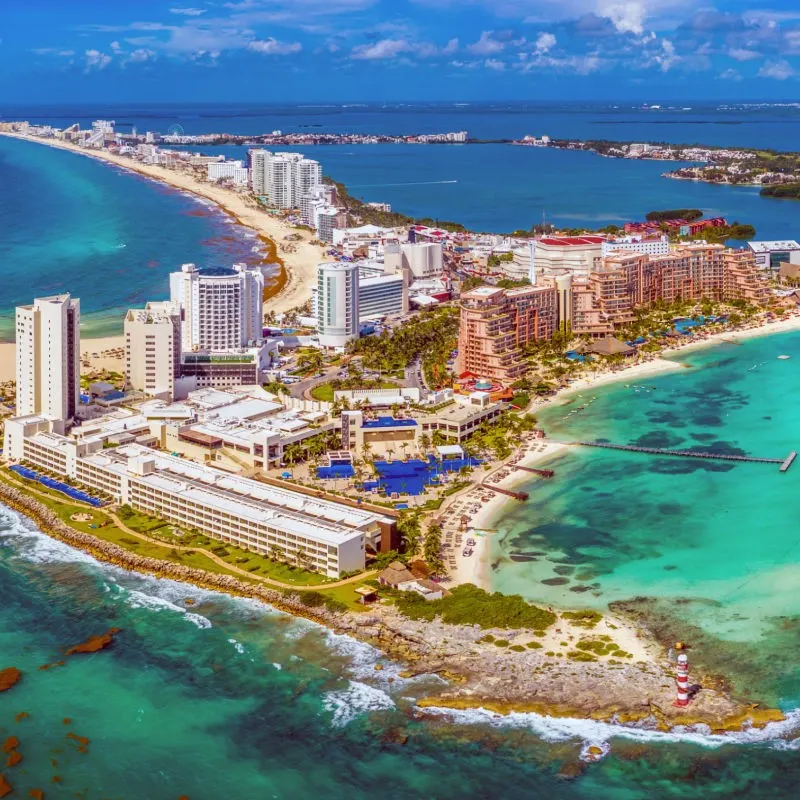
Plan Your Next Cancun Vacation:
Traveler Alert: Don’t Forget Travel Insurance For Your Next Trip!
Choose From Thousands of Cancun and Riviera Maya Hotels, Resorts and Hostels with Free Cancellation On Most Properties
↓ Join the community ↓
The Cancun Sun Community FB group has all the latest travel news, conversations and tourism Q&A’s for the Mexican Caribbean

Subscribe to our Latest Posts
Enter your email address to subscribe to The Cancun Sun’s latest breaking news affecting travelers, straight to your inbox.

Rex
Monday 20th of February 2023
I sill think "stinky seaweed" is bad publicity for the beaches of Cancun and QR. The smell is like "rotten eggs" is a new one on me as I have never experienced the rotten egg smell but maybe our resorts have picked it up before the rotten egg small set in. However, we have walked beaches in Xpu Ha that the sargassom has not been removed and it was not "stinky seaweed' that I remember and we have been dealing with this in Mexico and Belize for the last 7 or 8 years and it does not deter us from coming back. If it is "stinky seaweed" that smells like "rotten eggs" we might consider not coming back to the Riviera Maya 3 or 4 times a year like we have done.